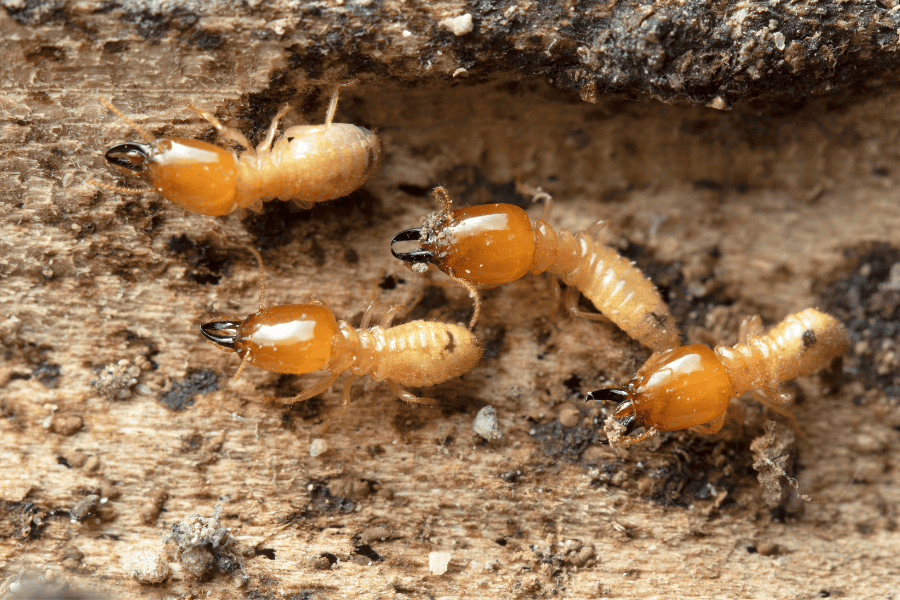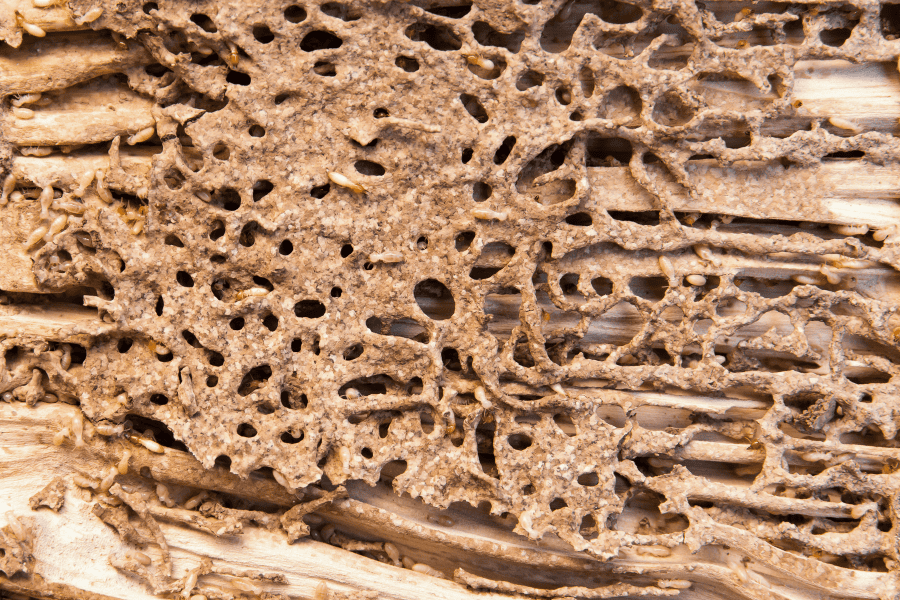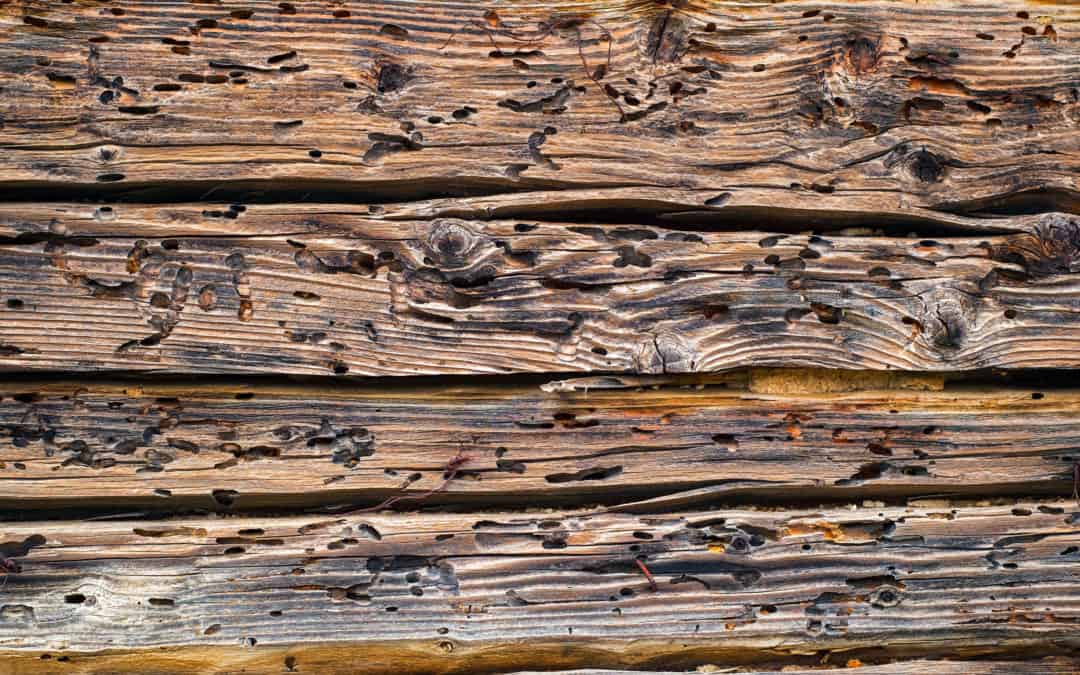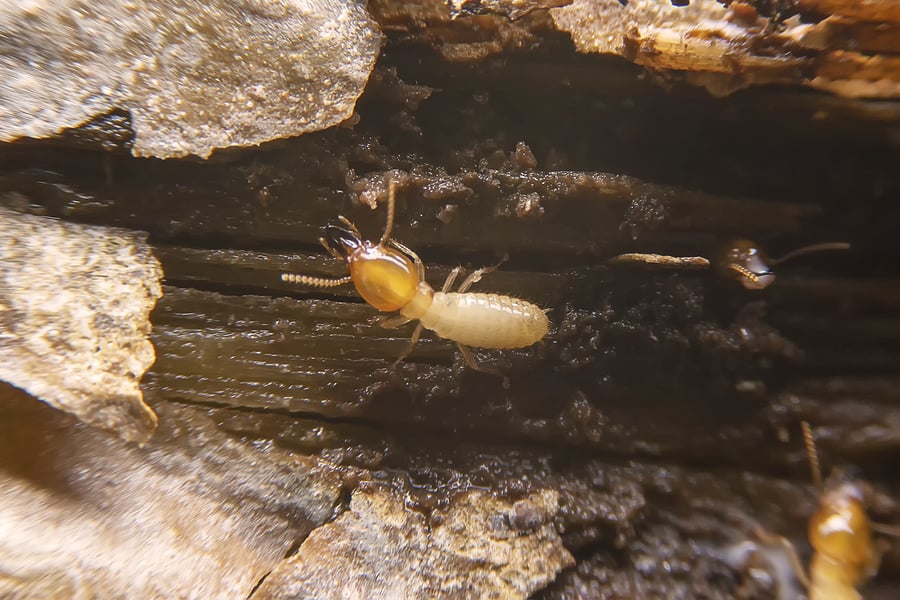READY TO GET STARTED?
REQUEST A FREE ESTIMATE
Fill out the form below or call (336) 226-1448 for a free, no-obligation estimate.

Termites may be small, but the damage they can cause to your home is anything but. With warmer weather in spring and summer, these pests become more active, particularly in places like North Carolina where the climate is ideal for their colonies to thrive. Protecting your home from termites is essential to maintaining its structural integrity and avoiding costly repairs. This comprehensive guide to termite control near me will walk you through what you need to know about termites, how to identify early warning signs, and practical steps to keep them at bay this season.
Termites are wood-eating insects that live in colonies and can chew through wooden structures, flooring, and even wallpaper. The most common types in North Carolina are subterranean termites, which thrive in moist environments and can silently damage your property. Unlike other pests, termites don’t just infest; they destroy.
What makes them particularly challenging is that their activity often goes unnoticed until significant damage has already been done. This means prevention and early detection are crucial for homeowners.
Termites are most active during spring and summer due to the warmth and humidity that North Carolina provides. During these seasons, reproductive termites, also known as swarmers, search for new locations to establish colonies. If they find your home or yard hospitable, it could spell trouble.
Subterranean termites also require moisture to survive, making water sources such as leaky pipes, clogged gutters, and standing water attractive to these pests. The combination of environmental factors and increased termite activity makes spring and summer critical times for homeowners to take preventive action.
Early detection is key to avoiding termite damage. Look out for these common signs of termite activity:
If you spot any of these signs, it’s time to take immediate action.
Keeping your yard tidy and less appealing to termites can go a long way in protecting your home. Here’s how you can do it:
Since termites thrive in moist environments, moisture management is a simple yet effective strategy:
One of the best ways to stay ahead of termites is to inspect your home regularly:
When it comes to termites, being proactive is your best defense. By recognizing warning signs, managing moisture, maintaining your yard, and scheduling regular inspections with termite control near me, you can significantly reduce the risk of a termite infestation. Spring and summer are ideal times to take these steps to your home for years to come.
For homeowners in North Carolina, expert guidance in termite control is just a call away. Protect what matters most by contacting a local pest control professional who understands the unique needs of your region. Don’t wait for termites to make themselves at home in your home!

When most people think of pests, they picture mosquitoes buzzing around in the summer or rodents sneaking indoors to escape the winter cold. However, there is one often-overlooked pest that can cause serious long-term damage if left unchecked: termites. With March approaching, Termite Awareness Month, now is a perfect opportunity for homeowners in North Carolina to prioritize termite inspections. By understanding these silent destroyers and taking proactive steps, you can protect your home from potentially costly damage.
While most pests might take a break during colder months, termites are active year-round, especially given North Carolina’s mild climate. These tiny invaders don’t hibernate but continue to feed on wood, putting your home at risk. Unlike ants or spiders, termites work silently, often causing damage before you even realize they’re there.
Ignoring the threat can result in significant damage, with termites quietly consuming the wooden structures of your home. By the time their presence becomes noticeable, the damage may be extensive and expensive to repair. That is why scheduling a termite inspection should be a priority for homeowners, even during winter.
Identifying a termite infestation early can save you from costly repairs. Despite their ability to hide, termites leave telltale signs that can alert you to their presence.
Knowing these signs is helpful, but identifying an infestation early often requires the expertise of a professional. This is where professional termite inspections come in. A trained pest control technician can conduct a thorough inspection, identifying signs of termites in hard-to-reach or hidden areas like attics and crawl spaces.
Professional inspections are crucial because termites can remain active in areas that are not easily visible. A licensed pest control expert can uncover hidden damage and ensure your home remains protected.
The best way to protect your home from termites is to prevent them from entering in the first place. Here are a few simple yet effective prevention tips:
Termites may be silent, but their impact is anything but. For North Carolina homeowners, understanding the importance of early termite inspections and staying vigilant against these pests is vital. By recognizing the signs of an infestation early and taking preventive measures, you can protect your home from the costly damage termites can cause.
Remember, when it comes to termites, an ounce of prevention is worth a pound of cure. Consider scheduling a professional inspection today with a licensed pest control company near you. Secure your home’s future by learning more about how you can protect it from termites and other pests.

It’s estimated that termites cause billions of dollars worth of damage annually in the United States. While they primarily feed on wood, they can also damage books, insulation, and swimming pool liners and filters. They like to wreak havoc on trees, shrubs, and plants that are in bad health. Termites can infest buildings at any time. This can be particularly troublesome when buying or selling a home. A termite inspection and report are usually required as a condition of sale of a home.
Signs of Damage
When signs of termite damage surface, the infestation has often been there for years with extensive damage already sustained. Some signs of termites in your home include:
Significant damage from termites can have an effect on the structural integrity of your home and can even cause ceilings and floors to collapse. Termites can also ruin furniture and flooring.
Damage Costs
One question that many homeowners have is if termite damage is covered under a homeowner’s insurance policy. Unfortunately, in most cases the answer is no. Homeowner’s insurance typically does not cover termite damage or removal because it can usually be prevented through routine home maintenance. However, you should always check with your insurance provider to see what you are and aren’t covered for.
Prevention
Termites can be prevented with scheduled periodic professional inspections which can help identify signs of infestations early. This can help keep repair costs down and the damage to a minimum. Any professional termite control plan should eliminate termites, prevent future termite infestations, and prevent termite damage. If you suspect that you have a termite problem or want to have an inspection done, contact your local pest control company.

Buying a home is a major investment. For most homeowners, a lot of time is spent repairing and renovating their home to their liking. However, owning a home can also come with a lot of unexpected problems that can be costly to repair, such as termite damage. Termites can colonize homes and cause significant undetected destruction over a long period of time. Most of the time, it costs thousands of dollars to repair their damage. Unfortunately, the infestations can sometimes be exacerbated by the homeowner. Below, we’ll explain what you need to know to make sure you aren’t attracting termites.
Improper Drainage
One of the most common reasons why you may have a termite infestation is due to improper drainage around your home. Subterranean termites are attracted to moisture and need an abundant source of nearby water to survive. Debris can build up in your home’s gutters, and the excess moisture can soften your roof and cause it to rot. A downspout can help divert rainwater away from your foundation, and splash blocks can prevent the water from pooling.
Wood Mulch
The type of materials you use to landscape can attract termites, specifically mulch. Mulch is often used near and around homes, usually against the foundation. Unfortunately, it serves as a food source for termites as it retains moisture and attracts these pests right to the edge of your home. Try to minimize the use of wood mulch and keep it at least 15 inches from the foundation.
Moisture
Lack of airflow and leaking pipes contribute to moisture problems in the home and can create a perfect environment for termites. Eliminating any type of excess moisture inside of your home is a huge step in preventing termites. Consider enclosing your crawlspace to prevent termites and improve the overall health of your home. Doing so will reduce the moisture, decrease humidity, lower utility bills, and prevent mold and wood rot.
If you’ve taken the necessary steps in preventing termites but still suspect that you have a problem, call your local pest control company to help. They can help set you up with a termite inspection and termite control and prevention plan.
Buying a home leaves you with hundreds of things to consider and decide on. From furniture to renovations to insurance, there’s a lot to take in! One thing that usually doesn’t come to mind immediately is termite control.
Termites can cause serious damage to your home and that damage is usually not covered by homeowner’s insurance policies. Most times, you won’t even think about it until the damage is already done. However, there are steps you can take to prevent termite damage. With the Sentricon Always Active® System and a termite provider’s inspection, your home can be protected 24/7/365.
So, what are some benefits of Sentricon Termite Protection?
Termite protection might not be at the top of your list, but when you think about the $5 billion in damage that termites cause every year, it is something to highly consider. If you’re purchasing a new construction home, contact your builder about what they have to offer your home in terms of termite protection.
If you have questions about the right type of termite protection or warranty for your home, give your local termite control provider a call. They will be able to answer all of your questions so you can make the right decision for your home and family.